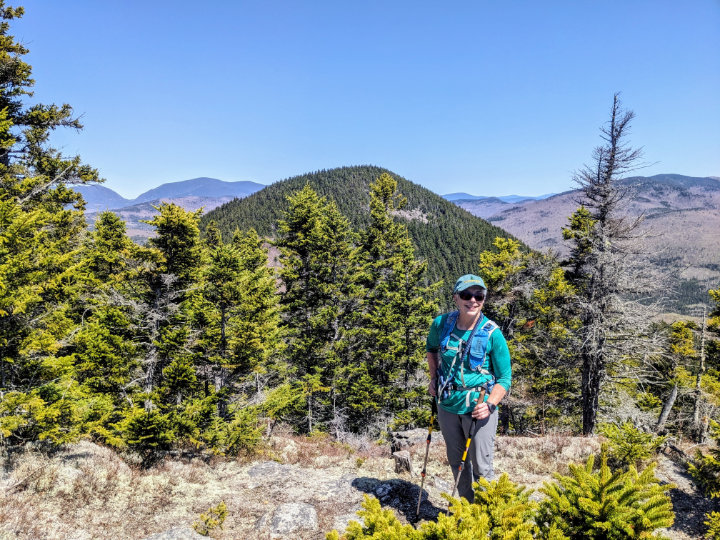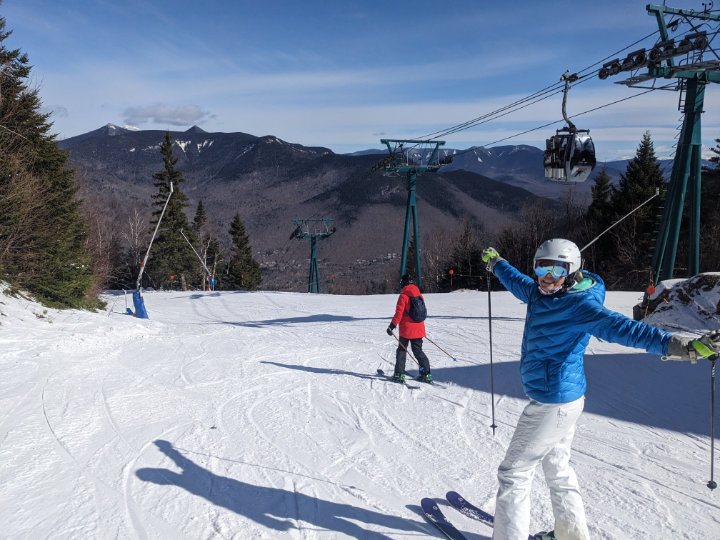A NH Child’s Winter In The 1940’S
by Robert Hanaford Smith, Sr.
Weirs Times Contributing Writer
In past columns I’ve written about scenes from my childhood during the spring, summer, and fall, so it seems advisable now to share some of the winter experiences while we are still in the season.
New England country roads with dirt (sand and gravel) surfaces became sledding trails for the boys and girls of my era. Actually those I played with called it sliding. We used sleds, with an occasional toboggan or traverse, but we went sliding on the roads and in the fields when the conditions were right. Our sleds were of the flexible flyer variety with metal runners and frame underneath wood slats with a wood handle for steering. Packed snow on the hills of a dirt road surface as the result of being run over by car tires became a good place to use our sleds. The limited vehicle traffic travelled our Dana Hill Road at slow speeds and if we met one on a ride down the hill we simply turned into the snow bank beside the road for a quick stop. There were times when our school recesses became sliding times as we took our sleds up the hilly road a quarter of a mile or more and slid down to the schoolhouse where the teacher had stopped traffic heading up the hill. The town sanding dump truck was not a welcome sight for us. In those days the bed of the truck was lifted to let the sand slide out, sometimes assisted with a man with a shovel at the back of the truck. Slippery roads meant that it was time to get out the tire chains for cars and trucks. If the conditions were right in the hay field below our house, meaning a crusty surface strong enough to support sled and child, we would slide there after school. Sometimes the sleds runners would break through the crust and stop abruptly, with the rider continuing to slide by himself on the snow.

I have experienced the inevitable facial scrapes and bruises from those episodes. Large pieces of cardboard were found to be safer substitutes for the runner sleds under certain conditions. The eastern side of our field provided a steeper but shorter hill for sliding, but we had to maneuver between the apple trees and there were saplings along the edge of the field. One Christmas I had received some new lumberjack style heavy wool winter trousers with black and red checks and wore them as I slid down the hill among the apple trees,into the clear at the bottom of the hill, continuing into the saplings beyond which stopped me. Somehow, maybe from a nail from the sled, my new trousers sustained a large tear in them. I cried as I returned to the house, knowing that my parents weren’t going to be pleased with what I had to show them. I wasn’t hurt; the crying was to exhibit remorse, and maybe it did hurt a little, but I escaped the application of any additional pain applied as punishment.

My boyhood winters were not all play, there were chores to do, such as sawing and splitting wood, filling the kitchen and sitting room wood boxes morning and evening, feeding, watering and bedding the animals, cleaning out the tie-up, and shoveling snow after the storms, washing dishes, and sometimes hanging up wet clothes to dry. If the weather was thought warm enough they were hung outside even in winter.I do recall times when I found my union suit (longjohns) frozen stiff on the clothesline.
I had siblings, so we shared the chores, and sometimes they were related to our 4-H projects. One of my memories is that of mixing grain and warm water in a pail in our kitchen and feeding the pigs twice a day. By the way the tie-up was that section of the barn where the cattle were tied up and spent a good part of the winter. Cleaning it meant shoveling the manure out of an open window onto the manure pile in back of the barn. In the barn yard there was a concrete water receptacle for the cows which was in a wood enclosure. We used an axe to cut through the ice which sometimes built up considerably during the winter months. Milking the cow was another of the jobs that we boys had to learn to do, along with separating the cream from the milk and operating the churn to make butter.
 A lot of activity took place in and around the barn. One winter’s day I discovered a red fox curled up in the snow behind the barn sleeping and decided I would find a way to kill it, so I found a brother (maybe two) to help me dispatch it. We found a long wooden pole and plotted to sneak up to the fox and whack it on the head with the pole, hoping that would kill it. (I remembered visiting our neighbors in past years, the Leslie Smith family, and walking through a shed with multiple fox and probably other animal pelts.) On approaching we realized that the animal was not sleeping, but already dead. The dead fox was taken to Leonard Huckins who skinned it for us, so we had our own fur pelt, which the last I remember was stored in a bureau drawer.
A lot of activity took place in and around the barn. One winter’s day I discovered a red fox curled up in the snow behind the barn sleeping and decided I would find a way to kill it, so I found a brother (maybe two) to help me dispatch it. We found a long wooden pole and plotted to sneak up to the fox and whack it on the head with the pole, hoping that would kill it. (I remembered visiting our neighbors in past years, the Leslie Smith family, and walking through a shed with multiple fox and probably other animal pelts.) On approaching we realized that the animal was not sleeping, but already dead. The dead fox was taken to Leonard Huckins who skinned it for us, so we had our own fur pelt, which the last I remember was stored in a bureau drawer.
We slept upstairs in unheated bedrooms on rope beds with cotton filled mattresses and on the really cold nights soapstones were heated on the wood stove, wrapped in newspapers, and used as foot-warmers. After school I sometimes visited the cellar to grab an apple to eat while I read about a famous person in one of the orange covered book series by a publisher I don’t remember and/or listened to a radio adventure program such as “Sky King” or “Sergeant Preston of the Yukon”. Saturday nights we ate beans for supper and sometimes had leftover beans for breakfast on Sunday morning, and maybe bean sandwiches for lunch on Monday. Of course, Saturday night was bath night when the galvanized metal tub was brought out and placed on the kitchen floor beside the stove with its’ water reservoir where enough hot water was available. On Sunday evenings, after the Sunday afternoon church services at the schoolhouse, we popped popcorn on the stove which was eaten with milk with perhaps a sour pickle on the side. If the static on the radio wasn’t too bad we listened to “Amos and Andy”, “George Burns and Gracie Allen”, “Jack Benny” and “Our Miss Brooks”. And I must not forget school, since that dominated weekdays from nine a.m.to three p.m. The black chalkboards and the squeal of the chalk writing upon them, the desks with the built in inkwells to supply ink for our pens before the ball-point ones arrived, the long settees used for group activities and guests to sit in, the wood stove with the circular medal enclosure around it, and the making of valentines for every pupil during craft times are all part of my memories. There was a contest for the best valentine, but everyone knew that Peter Emmons would be the winner, not because he was the teacher’s nephew, but because he was the most artistic person in school.
So there is a quick sketch of my childhood in winter though much more could be added. I have some closing advice to the sledders, though. Be careful and don’t take foolish chances. Know where your sled will stop before you start and never try to slide under a barb-wire fence, it’s not worth the risk, even though some have successfully kept their heads low enough to survive that stunt.
Robert Hanaford ,Sr. lives in New Hampton.




